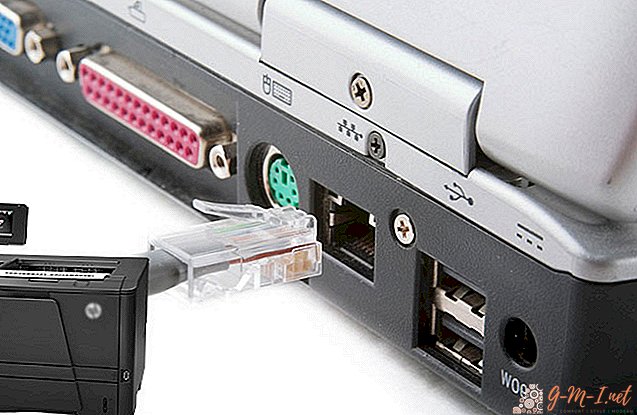 Often when you connect the printer, errors are issued or defects are detected during printing. The problem often lies in a faulty cable that connects to a PC or laptop. Replacing the wire is able to solve it. But what cables are and how to choose them? The article proposes to make out their types and characteristics.
Often when you connect the printer, errors are issued or defects are detected during printing. The problem often lies in a faulty cable that connects to a PC or laptop. Replacing the wire is able to solve it. But what cables are and how to choose them? The article proposes to make out their types and characteristics.
Features of the USB cable to connect the printer
The most popular wire is a USB cable. It is usually included with the printer, but may be missing. True, the cable is universal and find it in the store easily. If you buy a high-quality cord, and not a fake, you can count on a reliable connection of the printer or multifunction device with a computer.
Pros USB:
- strength;
- reliability;
- acceptable cost;
- Excellent data transfer speed, especially in version 3.0.
On the market there are wires of version 2.0, which transmit data at speeds up to 380 Mbit, and version 3.0 - their speed is already about 5 Gbps.
The USB cable for the printer has Type A (oblong) and Type B (square) connectors. The first is designed to connect to a PC and laptop, the second - for the printer and the MFP.
Type A connector is a wide plug with 6 pins inside. It corresponds to the standard USB-port, typical for all modern computers.
Connector type B square with notched corners, inside 4 pins. At USB-cable version 3.0, this connector will be blue and more in size.
Modern wire is equipped with technology Plug and Pay. With its help, the computer independently determines the model of the peripheral device, connects it and installs driver updates.
As for the length, 1.8-3 meters is enough for home use. In special cases, acquire up to 5 meters.
IMPORTANT!Size matters! The greater the length, the lower the data transfer rate. Particular attention should be paid to the owners of multifunctional devices - for them the maximum length of the cord is 3 meters.
This cord fits all peripherals, with a few exceptions. The Samsung ML-1210 and HP 1100 standard wire is not suitable, because you should check which cable to choose for connecting these devices in the store.
At one or both ends of the cable, a ferrite ring (keg) is desirable, which serves as a filter against high-frequency interference.
In order to avoid problems with signal damping, it is required to check the compliance of the length indicated on the marking of the cord with its actual dimensions. AWG marking is American (in inches), therefore we enclose its translation into the European metric below:
- 28 AWG = 0.81 meters.
- 26 AWG = 1.31 meters.
- 24 AWG = 2.08 meters.
- 22 AWG = 3.33 meters.
- 20 AWG = 5.00 meters.
Additional designations:
- HIGH-SPEED 2.0 or 3.0 - data transfer rate.
- Shield - the cord has protection from a foil or an additional grid.
- Pair - cable conductors twisted in a pair.
Network cable to connect the printer to the computer
Network cable is not as popular as a USB cable, but some printers and MFPs connect it to a computer through it. It is a twisted pair, with one or more pairs of copper conductors twisted between themselves and covered with a plastic sheath. Conductor insulation is 0.2 mm, made of polypropylene, polyethylene or polyvinyl chloride. This design increases the level of communication of the conductors of one pair.
Network cable advantages:
- ease of installation;
- low price

IMPORTANT!To prevent problems with printing or a complete refusal to reproduce it, choose a crimped wire. Crimping can be done on your own. This will require the actual cable and connector. You choose the length at your discretion, but not more than 100 meters.
What are the other types of wires for the printer?
HP inkjet printers use a power supply unit. Low distribution in modern printing devices has a LPT cable. Some time ago, printers and scanners were connected to a computer exclusively through LPT ports, so it was impossible to work with them from a laptop and netbook. There are adapters, but often their quality and reliability leaves much to be desired.
Of the benefits should highlight the speed of data transmission. However, the disadvantage is the length of the cord - about one meter, which contrasts particularly with the power cord. Suitable for home rather than office.
So, we have disassembled the main types of wires that are used to connect the printer and multifunction devices to a computer and laptop.
The choice of cable should be considered carefully, as by acquiring a wire of low quality and not conforming to your requirements, you risk getting the following problems:
- the computer "does not see" the printer;
- low data rate;
- failure to start printing;
- the connection periodically disappears.
The above information can help when choosing a cable to connect the printer to the PC.


Leave Your Comment